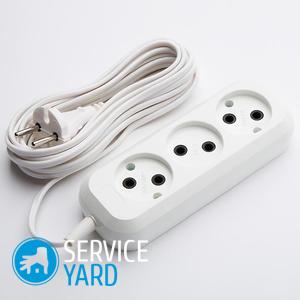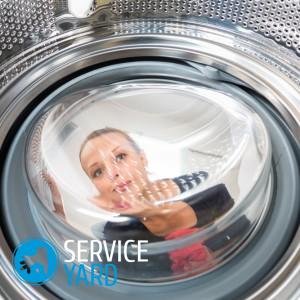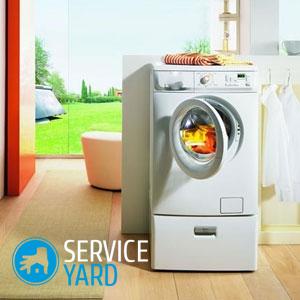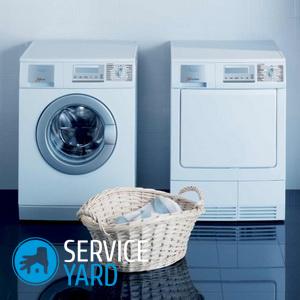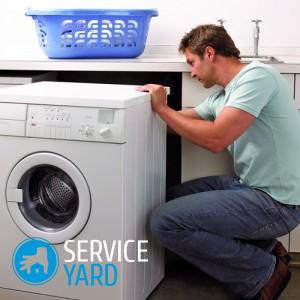Drain for a washing machine in the sewer
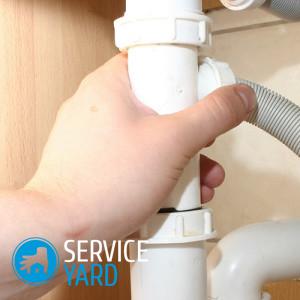
When connecting a washing machine, it is important to remember not only the safety of working with the appliance and the installation rules. We must not forget about the correct installation of the drain system. Today we will analyze how to properly connect the drain for the washing machine to the sewer. If you connect incorrectly, you risk not only flooding yourself and your neighbors, but also breaking the device. Therefore, the installation must be approached with all responsibility and well prepared.
to contents ↑Preparatory work
For proper operation of the device, it must be correctly installed. Nearby there should be a water supply system, a socket and a drain. Therefore, for washing machines, they most often choose a bathroom or kitchen.
First, study all the documents for the purchased device and, of course, the main document - instructions for use. If the manual was not included, find it on the Internet or contact the seller.
Often, careful study of it and careful observance of all recommendations is enough to figure out how to properly connect the drain of the washing machine to the sewer. But try again to remind the main points.
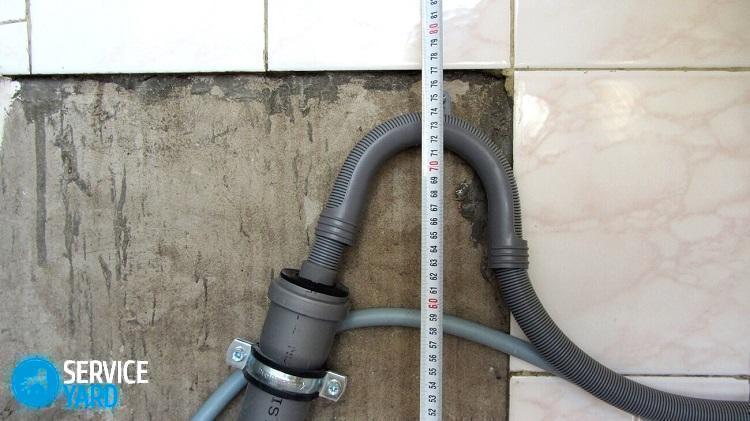
Steps:
- Find the dimensions of the drain pipe for your model. They come in handy when installing the hose.
Important! Please note that different machines may have different pipe heights.
- Remove all shipping parts - these are wooden blocks, staples and shipping bolts, which are necessary for transporting the device, since its moving parts are fixed.
Important! Keep these details, because if you need to transport the device, it will be much safer to do this by installing all the fasteners back. But during the operation of the device, all transportation details must be removed, otherwise the machine will become unusable very quickly.
- Put the plastic plugs in place of the transport screws.
- The coating on which the device is located must not slip, and the device itself must not cause damage to the coating during vibration. Therefore, the best option would be to install the device on a tiled floor, with an anti-slip substrate or on concrete without it. There are a number of rules that you can find in our separate article on the correct installing a washing machine in the bathroom.
- Be sure to adjust the height of the legs of the machine.
Important! When removing the bolts, pay attention that the tank hangs on the springs. Do not panic. This is his usual working position.
It is also necessary to prepare the tools.
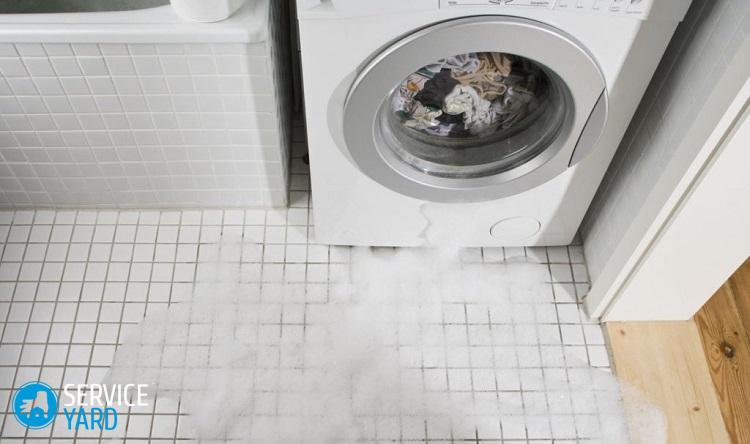
Necessary tools
So, to equip the drain for the washing machine into the sewer, you will need:
- Several screwdrivers - to remove the packaging material and bolts that hold the tank during transport.
- Set of wrenches. They can be replaced with a universal key. They will be needed to adjust the legs, as well as securing all pipe connections.
- Pipes, siphon, adapters and other elements, depending on the type of connection.
- Drain hose. Even if it is included with the device, check whether its length and quality are suitable for you. If something does not suit you - it is better to purchase the necessary hose.
- Sealant and rubber gaskets for sealing joints
Important! When using pipes made of metal-plastic, you will also need pipe cutter and welding.
Then you can start work on connecting the device.
to contents ↑Important! It will not be superfluous to immediately think about protecting equipment from failure due to power surges. Read about what are surge protectors which are better.
Siphon connection
You can connect the device to the sewage drain in various ways. Most often, a siphon is used for this purpose, since it does not allow unpleasant odors and waste water to enter the device.
Siphon connection
With this method, the drain hose is directly cut into the siphon under the sink. This is a quick and cheap way, but it has its drawbacks. The machine may smell sewage.
To avoid it, you can create an air shutter. For this:
- corrugation is connected to the siphon;
- bend it S-shaped;
- raise the upper end half a meter above the floor;
- the corrugation is already mounted drain hose machines.
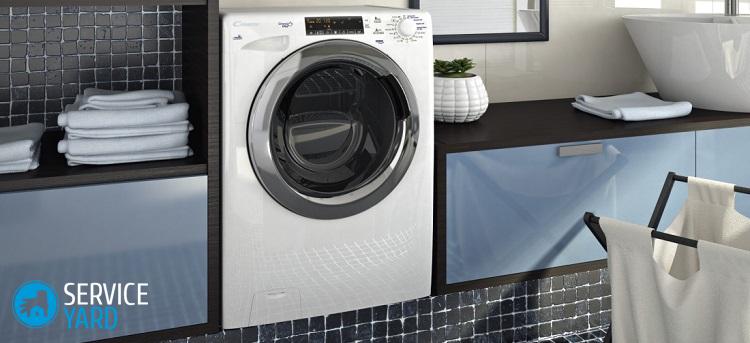
Special siphon
There are siphons with a non-return valve that prevent unpleasant odors from escaping from the pipe. It can be connected with a hose and sealant.
Important! If the corrugation is not bent, then all unpleasant odors from the drain will fall into the tank with clean linen.
Connection via corrugation
In this case, the role of the siphon is taken by the corrugation. For this option, the corrugation is taken and bent S-shaped. Then it is mounted in a sewer pipe.
Important! This is a more time-consuming method, but it has all the advantages that it has a siphon connection. Often it is used if the siphon is far from the device.
Pros of connecting via siphon
With any connection via a siphon, the following advantages can be distinguished:
- reliability;
- safety of use;
- external aesthetics
- with a siphon, you are protected from the flood, since all connections are carefully sealed;
- You can also use the bathtub or sink at any time, without having to wash them after each wash.
Important! Please note that the siphon is installed vertically, since the horizontal version of the installation carries the risk of leaks.
Remember that in any case, after joining all the parts, you do not need to immediately start a full wash with a full tank of linen. Learn how to do the right thing to avoid potential problems. first start of the washing machine.
Consider the option of draining without using a siphon.
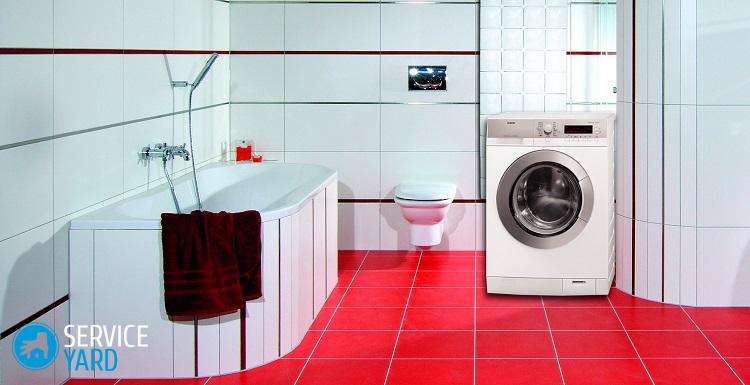
Insert into the bathroom or toilet
This is a very easy way to provide a drain. For it, you need a drain hose and a hook-shaped nozzle:
- The nozzle is hooked over the side of the sink or bath.
- A hose is fixed on it, and dirty water leaves through their sinks.
Cons of the method:
- This is the easiest, but the most unreliable option, because with a strong pressure the hose can break and the flood cannot be avoided.
- Bad smell is another problem with this type of connection. The siphon for connecting the washing machine to the sewage system in this regard is more efficient and devoid of the listed disadvantages, but this is also a more laborious method.
- Also, the organization of the drain thus greatly pollutes the bath itself - after washing you will have to clean it additionally.
Important! When installing this design, you must carefully attach the hook to the edge of the bathroom.
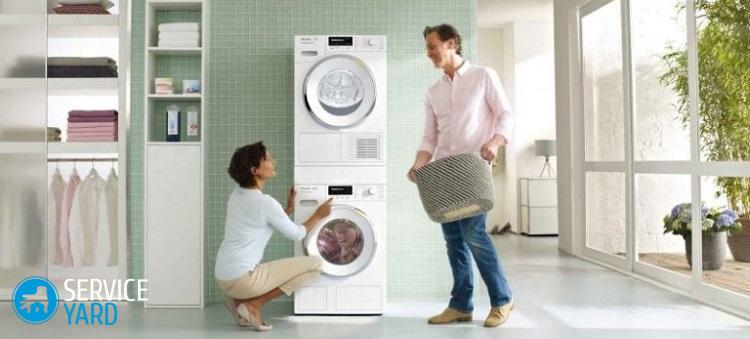
Drain hose and its height
In addition to the installation of the drain, close attention deserves the question of how to properly install the drain hose of the washing machine:
- Be sure to consider the height of the drain hose:
- if it is too high, the water will not be able to get into the drain;
- if it is too low, then water can be poured through it into the device.
- So that the collected water does not merge before the time ahead of time - lift the hose vertically by half a meter.
- The drain is connected to the device itself at a height of about 80 cm from the floor. You should not install the hose above, since the power of the pump pumping dirty water may not be enough.
- Most manufacturers also put a limit on the length of the drain hose - no more than 1.5 meters.To accurately determine the maximum length of the hose - it is necessary to find out the power of the pump, which pumps water from the machine.
to contents ↑Important! Remember to install the drain hose so that it does not twist and is not squeezed out. Otherwise, the water may stagnate or not pass into the drain at all.
Helpful hints:
- Some of the masters advise to leave small air gaps during sealing, which will allow water to pass more calmly into the drain, without returning to the tank of the machine. But the height of this gap should be higher than the possible water level in the sink or bath.
- Remember that during operation, periodic maintenance of the equipment is necessary. For more information on how to protect your SMA from scale and other problems that can result from poor water quality, see our separate articles:
Stock footage
The cost of professional work on connecting household appliances today is quite high. If you deal with the nuances, then it is quite possible to save money and cope with such a task yourself. But with complex connection options (for example, the need to install the machine in the corridor) or installation problems, it is better to contact specialists.




